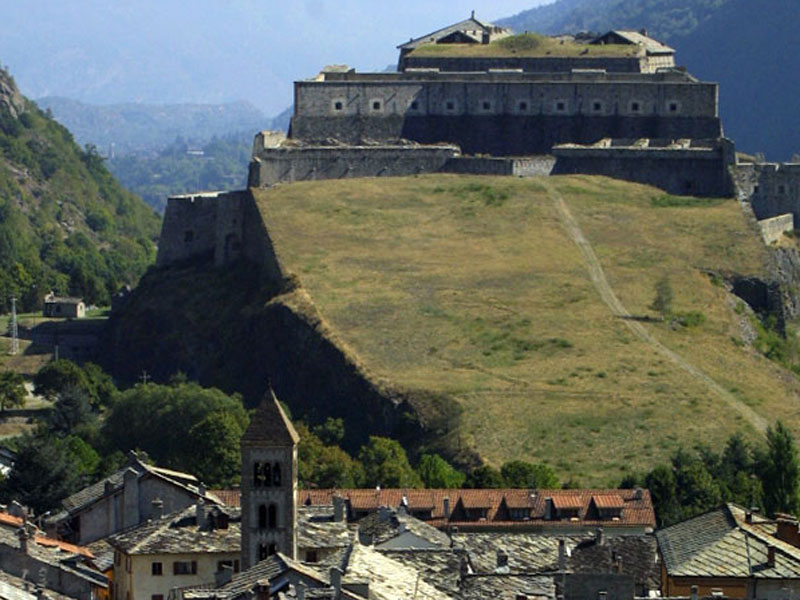The Fortification of Exilles
The Fortification of Exilles lies a few kilometers from Salbertrand. The rocky spur that has been dominating the valley since the times of the Celts and the Romans has always represented an important strategic military point, and the presence of a first fortified nucleus in the area has been documented since the 12th century, when the Earls of Albon had the strategic, military, and trade control over the road of Monginevro and Exilles represented the easternmost border of the Principality.
In the 14th century, the castle was described as a group of buildings gathering around a big circular tower that will represent for centuries the keep of the fortress. In the following centuries, it underwent some changes under the French who decided, in 1601, to transform the medieval castle into a modern fortress with bulwarks.
In 1708, with the beginning of the rule of the House of Savoy, according to a project of the military engineer Ignazio Bertola, the fire front was turned over and the cannons headed towards France. After the treaty of Paris of 1796, Napoleon decided to destroy it. The Fortification was rebuilt by the House of Savoy between 1818 and 1829 according to the formal and defensive structure of the 18th-century fortress, updated according to the evolution of the 18th-century artillery. The final result is the structure we can still admire today.
In 1915 the fortification was unarmed and its fittings moved to the eastern front of World War I. However, it continued to be used as a deposit and a recruitment center until 1943. After 8th September it was definitively abandoned by the soldiers and its decline started. It was recovered in 1978 after being purchased by Regione Piemonte.
Today, open to the public after its renovation and functional recovery carried out by Regione Piemonte and Museo Nazionale della Montagna, the Fortification of Exilles offers to the visitor an articulated visit: two permanent museums dedicated to the alpine troops and to military architecture and two guided visits (to the lower fortification and the attics) characterized by settings of great emotional impact.






